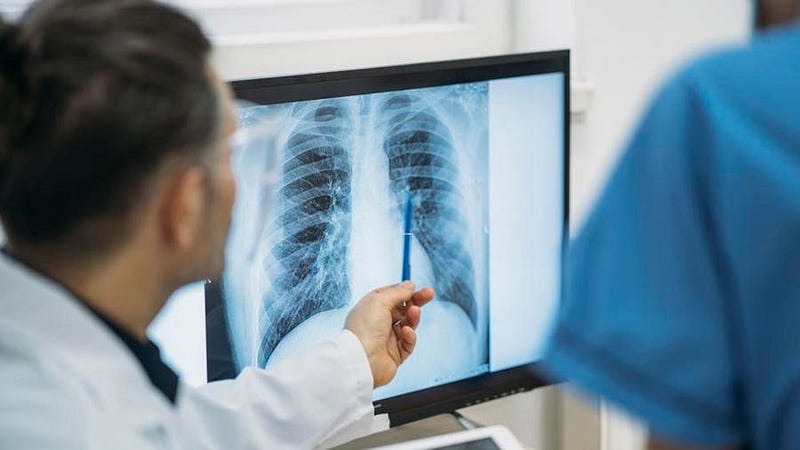Navigating the Radiology License Process in California: A Complete Guide
Understanding the Radiology License in California
Obtaining a radiology license in California is a vital step for anyone aspiring to work as a radiologic technologist in the state. This certification ensures that you are qualified to operate radiologic equipment and perform diagnostic imaging procedures safely and effectively. The state mandates that all radiologic technologists must be licensed to protect patients and ensure high standards of care.

Radiology License in California: Requirements and Process
Before pursuing a radiology license in California, it’s essential to familiarize yourself with the state’s licensing requirements and procedures. The California Department of Public Health (CDPH) Radiologic Health Branch oversees the licensure of radiologic technologists in the state and establishes the standards for education, training, and competency assessment.
To obtain a radiology license in California, individuals must meet certain eligibility criteria, which typically include completing an accredited radiologic technology program, passing the American Registry of Radiologic Technologists (ARRT) examination, and fulfilling any additional state-specific requirements. These requirements may vary depending on the type of license being sought, such as general radiography, fluoroscopy, or mammography.
California Radiology License: Ensuring Compliance with State Regulations
In California, radiologic technologists must hold a valid state license to practice radiography legally. The California radiology license demonstrates that an individual has met the state’s education, training, and competency standards for performing radiographic procedures safely and effectively. It’s essential to stay informed about the renewal requirements and continuing education obligations associated with maintaining a California radiology license to ensure ongoing compliance with state regulations.

California Fluoroscopy License: Specialized Credential for Fluoroscopic Procedures
In addition to a general radiology license, radiologic technologists in California may pursue a fluoroscopy license to perform fluoroscopic procedures. Fluoroscopy involves real-time imaging of internal structures using a fluoroscope, a specialized X-ray machine. To obtain a California radiology license, individuals must meet specific education, training, and examination requirements established by the CDPH Radiologic Health Branch.
Requirements for a California Radiology License
To obtain a radiology license in California, you must meet specific educational and professional criteria:
1. Education: Complete an accredited radiologic technology program. These programs provide the necessary theoretical knowledge and hands-on clinical training.
2. Examination: Pass the American Registry of Radiologic Technologists (ARRT) certification exam or the California State Examination. This exam assesses your competency in radiologic technology.
3. Application: Submit an application to the California Department of Public Health — Radiologic Health Branch (CDPH-RHB). The application must include proof of education, exam results, and a background check.

California Fluoroscopy License
In addition to a general radiology license, technologists who wish to perform fluoroscopic procedures must obtain a California fluoroscopy license. Fluoroscopy is a specialized imaging technique that allows real-time visualization of internal structures, often used in diagnostic and interventional procedures.
# Maintaining Your Fluoroscopy License
1. Continuing Education: Complete 4 CE credits specifically related to fluoroscopy every two years, in addition to the 24 CE credits required for the general radiology license.
2. License Renewal: Renew your fluoroscopy license every two years, ensuring all CE requirements are met and the renewal fee is paid.
The Importance of Licensing
Obtaining and maintaining a radiology or fluoroscopy license in California is crucial for several reasons:
- Patient Safety: Ensures that technologists are knowledgeable and competent in using radiologic equipment, minimizing radiation exposure risks.
- Professional Standards: Licensing upholds high standards of practice and professionalism in the field.
- Legal Compliance: Operating without a license can result in legal consequences and professional penalties.
Conclusion
Navigating the licensing process for radiologic technologists in California, including obtaining a fluoroscopy license, is a critical step in ensuring a successful and compliant career in radiology. By meeting the educational requirements, passing the necessary examinations, and committing to ongoing professional development, technologists can provide safe and effective patient care while advancing their careers in this dynamic and essential healthcare field. For more information on obtaining your radiology or fluoroscopy license in California, visit the [California Department of Public Health — Radiologic Health Branch](https://www.cdph.ca.gov/Programs/CEH/DRSEM/Pages/RHB.aspx).


Comments
Post a Comment